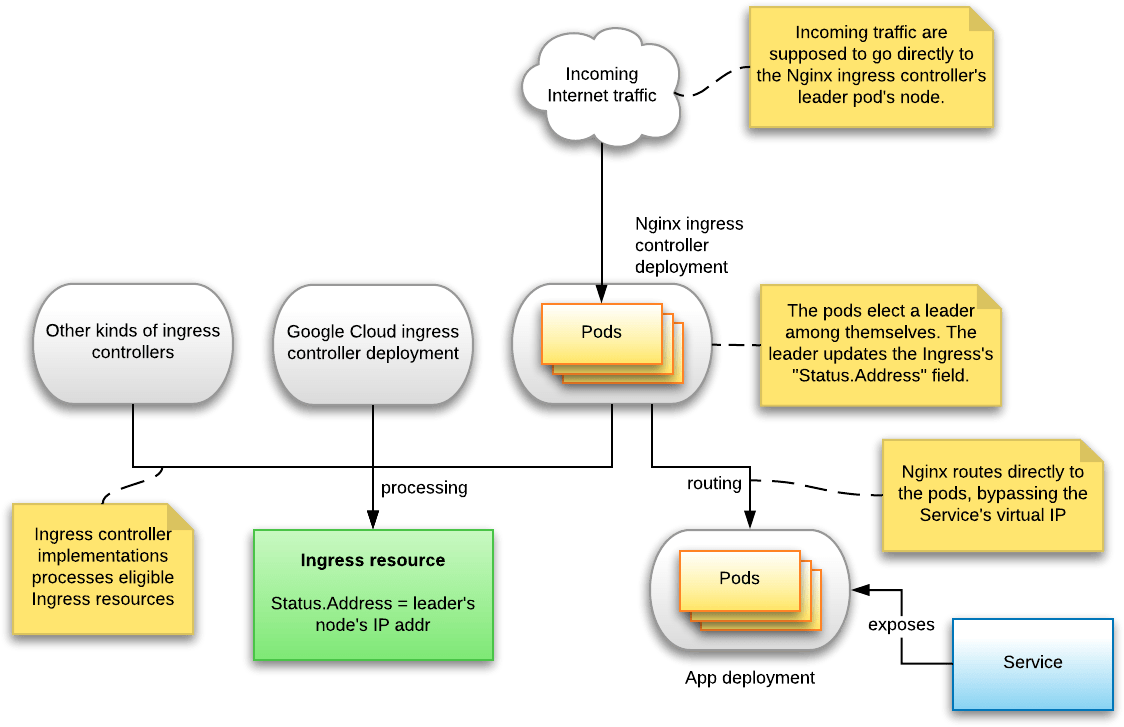Kubernetes/Ingress controller
The Ingress resource type was introduced in Kubernetes version 1.1. The Kubernetes cluster must have an Ingress controller deployed in order for you to be able to create Ingress resources. What is the Ingress controller? The Ingress controller is deployed as a Docker container on top of Kubernetes. Its Docker image contains a load balancer like nginx or HAProxy and a controller daemon. The controller daemon receives the desired Ingress configuration from Kubernetes. It generates an nginx or HAProxy configuration file and restarts the load balancer process for changes to take effect. In other words, Ingress controller is a load balancer managed by Kubernetes.
- Ingress vs Loadbalancer service
The difference between the LoadBalancer service and the Ingress in how the traffic routing is realized. In the case of the LoadBalancer service, the traffic that enters through the external load balancer is forwarded to the kube-proxy that in turn forwards the traffic to the selected pods. The Ingress load balancer forwards the traffic straight to the selected pods which is more efficient.
Nginx ingress controller
Nginx controller listens for events on the following resource types changes:
- Ingresses
- Endpoints
- Secrets
- ConfigMaps
Events get into the queue represented by controller.syncQueue and the internal/ingress/controller/controller.go queue handler function, function syncIngress(). This function collects all necessary information to regenerate the Nginx config file: it fetches all relevant Ingress objects and looks up associated Pods' IP addresses that the Ingresses should route to.
syncIngress() then calls internal/ingress/controller/nginx.go function OnUpdate() to actually write out the new Nginx config file and to reload Nginx.
Resources;
Resources
- Kubernetes Ingress Explained For Beginners by KodeKloud
